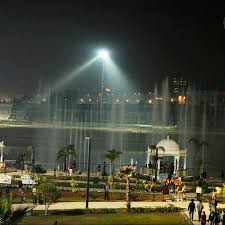The Gomti River flows through the heart of North India, Originating in the foothills of the Himalayas and passing through the historical city of Lucknow, the Gomti River holds immense ecological, cultural, and historical importance. In this article we will discuss features of the this river and shed light on its significance for the surrounding communities and the ecosystem.

Table of Contents
Origin and Path of Gomti River
The River takes its birth in the pristine hills of Pilibhit district in the state of Uttar Pradesh. Flowing through various districts, it covers a total length of approximately 900 kilometers before merging with the Ganga River near Saidpur in Uttar Pradesh. Its journey meanders through several towns and cities, including the capital city of Lucknow, where it gracefully enhances the landscape.
Ecological Importance of Gomti River
The River serves as a lifeline for the ecosystem it nurtures. Its waters support a rich biodiversity, providing habitat for various aquatic species, including fish, turtles, and waterfowl. The river basin is also home to a diverse range of flora, including submerged plants, floating vegetation, and riparian trees. The Gomti River plays a crucial role in maintaining the ecological balance and contributing to the overall health of the region.
Cultural Significance of Gomti River
It has deep cultural and historical roots, being associated with ancient tales and legends. It holds great significance in Hindu mythology, as it is believed to be a sacred river that purifies the souls of those who take a dip in its waters. The banks of the river are dotted with numerous ghats, temples, and shrines, attracting pilgrims and tourists alike.
Importance for Agriculture
The fertile lands along the banks of the Gomti River provide excellent agricultural opportunities for the surrounding communities. The river’s waters are extensively used for irrigation, enabling the cultivation of crops such as rice, wheat, sugarcane, and vegetables. The agricultural practices supported by the Gomti River contribute significantly to the local economy and food security.
Conservation Efforts
Recognizing the importance of preserving this invaluable natural resource, various initiatives have been undertaken for the conservation and rejuvenation of the river. Efforts have been made to address pollution, reduce encroachments, and promote sustainable water management practices. The implementation of sewage treatment plants, afforestation drives, and awareness campaigns aim to restore the river’s ecological balance and ensure its long-term sustainability.
Conclusion
The Gomti River stands as a testament to the beauty and importance of rivers in our lives. It symbolizes the interplay between nature, culture, and human existence. As we appreciate its serene waters, we must also strive to protect and conserve this lifeline for the benefit of future generations. The river not only nourishes the land it traverses but also nourishes our souls with its timeless charm and significance.
Important Links